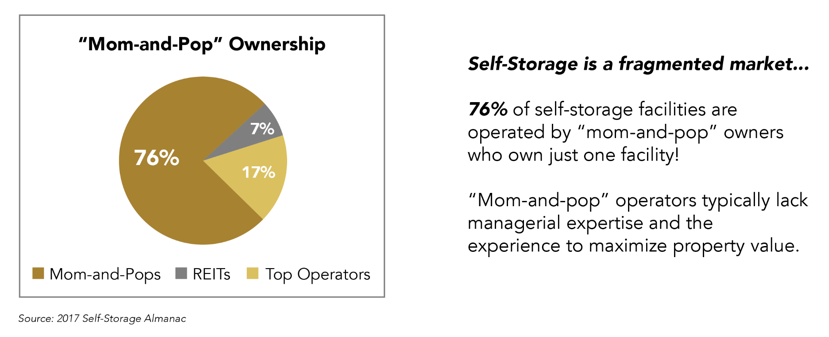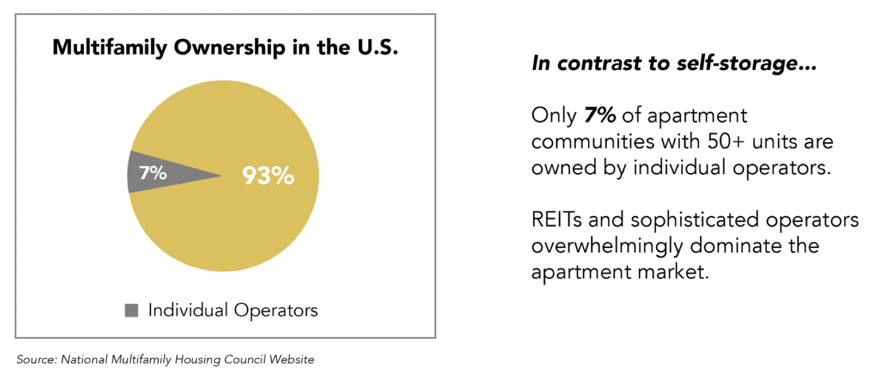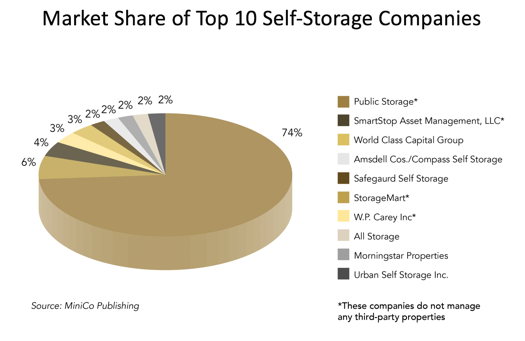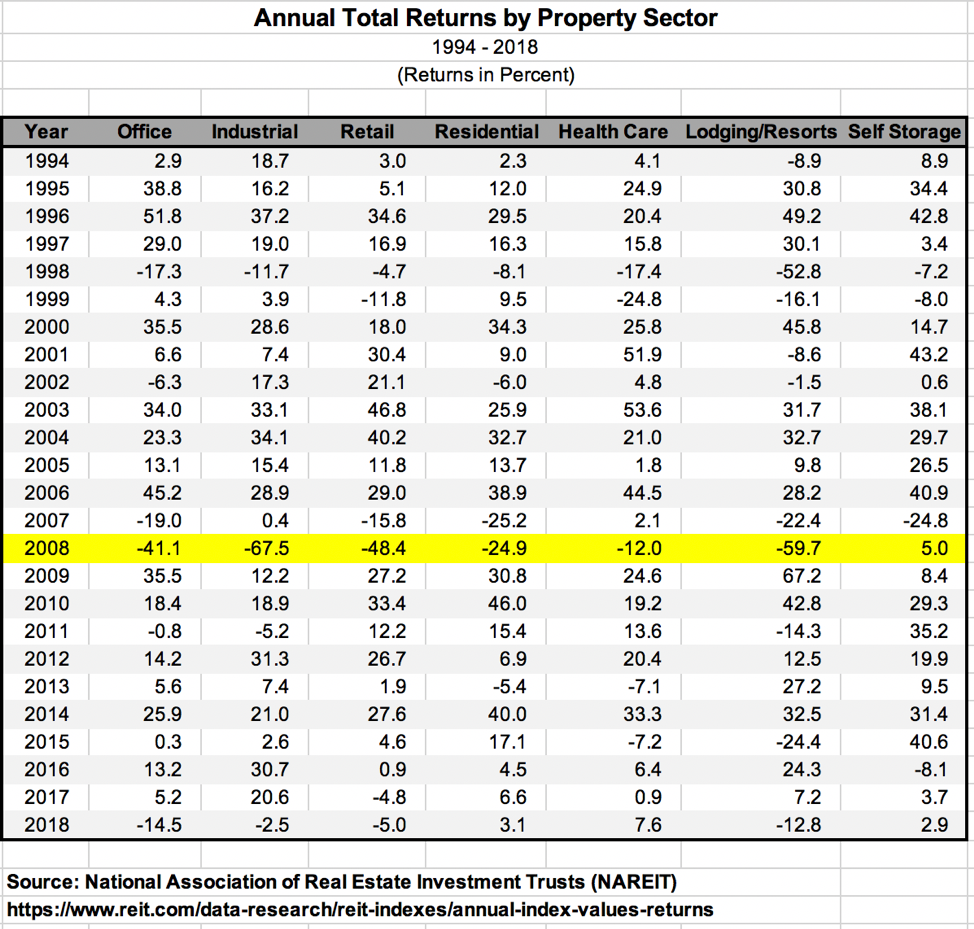Can Real Estate Agents Make A Lot Of Money
Have you joined the club yet?
If you've been excited about real estate investing but unable to find well-priced assets, then I invite you to join the club. You're not alone.
This is typically the case if you've been looking for multifamily assets of any size. Or single family homes to flip. Or homes to build a single family portfolio.
It's been tough out there, and it's not just limited to you Californians—or New Yorkers, Jerseyites, Texans, Floridians, or Las Vegans. It's no longer limited to large and popular cities or newer, stabilized assets.
It's tough all over and there are many reasons for this. I've discussed a number of reasons that multifamily is overheated on this blog. Many of the same issues apply to single family homes and other popular asset classes.
After years of banging our heads against the wall, my company decided to do something about it. We decided to look outside multifamily to alternative asset classes. Assets that aren't as cool or exciting. Assets that are, well, quite boring.
We began to explore self-storage and mobile home parks. And what we found was anything but boring.
When we studied alternative assets, we learned that the profile of the current owners—the sellers—was a critical factor in achieving substantial profitability.
I'm going to spend the rest of this post discussing self-storage and touching on mobile home parks—assets within my realm of experience. But what I'm saying may apply to other asset classes, too, like land, garages, parking lots, and more.
Related: Work Less & Earn More With Commercial Investments—Here's How
Fragmented Ownership – A Key to Alternative Asset Success
They say you make money when you buy. But I've always believed that to be partially true, you actually make money when you buy, when you upgrade, when you operate well, and when you sell.
But here, more than in most other realms, you really do have the potential to make massive profits through buying well.
It is estimated that about 74 to 76 percent of self-storage facilities are owned by less-than-sophisticated operators. And about 66 percent of all facilities are owned by single-facility operators—also known as mom-and-pop owners.
There are almost 55,000 self-storage facilities in the United States. That is more than the combined total of McDonald's, Subways, and Starbucks.
About 40,000 are run by independent operators. Perhaps 36,000 or so are single-facility operators. Many of these independents are mom and pops, and they run their facilities that way.
They don't need to run them better. They're making a profit and they're happy.

Contrast this ownership breakdown with the situation in multifamily right now. The apartment world has been increasingly dominated by larger, well-capitalized players. It is hard to acquire an under-performing property from this group.
This is why our firm expanded outside of the multifamily syndication world. Now we really love self-storage.
According to the National Multifamily Housing Council, 93 percent of multifamily assets with 50 or more units are owned by operators with more than one asset—potentially sophisticated operators.

The largest player in the self-storage arena, Public Storage, owns only about 7 percent of the market.

A different study shows the market share of the top 10 self-storage firms at only 26 percent.

Check out the average returns from a variety of REIT sectors from 1994 through 2018. In particular, check out the returns in 2008.

Note that self-storage was the only asset class here to have a positive return in 2008. In fact, every other sector experienced double-digit losses ranging from -12 percent (health care) to -67 percent (industrial).
Buy from a mom and pop!
So, what are some of the characteristics of a typical mom and pop-run self-storage facility? Though these don't apply to all, and I'll almost certainly offend someone with this generalization, I'll give you a quick overview of what I've observed.
Common Characteristics of Mom-and-Pop Operators
- If you build it, they will come. This worked in the early days of the business and some operators have kept up the tradition.
- No website (or a poor one). Similar to No. 1, the business was largely characterized by drive-by marketing for years, and this still works for many. (But can they really maximize revenue? They often don't need to.)
- No showroom. The opportunity for ancillary income is not a priority. Tenants can buy their boxes, tape, scissors, and locks at their competitors.
- Rare price increases. Many small operators become friendly with their tenants and rarely raise rents. The result can be below-market pricing.
- Across the board pricing. Where a savvy operator might raise their price on the last few units of a popular size, this is often too much trouble for a small operator who would have to use white-out or mark up his well-worn price sheet.
- Rent what we got. Storage facilities are mostly sheet metal and rivets. They can usually be reconfigured to meet the current local demand. If the demand for 10′ x 10's is high, and 10′ x 20's are empty, walls and doors can be added to optimize occupancy and income. Most small operators wouldn't do this.
- Poor maintenance. Some of the 70's and 80's facilities look like… well, 70's and 80's facilities. There is little reason to update or maintain them well, and their revenues reflect this.
- Poor security. The No. 1 crime at self-storage facilities is theft (obviously), and many smaller operators don't go to the trouble of installing security cameras and gated fencing.
- No marketing budget. Many of these operators boast that their marketing budget is close to zero (except for that donation to get their name in the charity raffle brochure). Their revenues suffer, but they may not know it or care.
- Untapped land. Many operators have unused land or parking lots for RVs and boats that could be used for profitable expansion through a beautiful new climate-controlled building. You may be the one to make this profitable expansion.
- Pest control and water infiltration. Many facilities get a bad reputation. In 1999, when my antique furniture was roach-infested and water-stained, I wasn't a happy self-storage customer.
- Rental truck income. Rental truck operations (U-Haul or Penske, for example) can often be a great source of ancillary income with little capital expense or effort. In addition to a healthy boost to the bottom line and asset value, this can also lift occupancy by 3 to 5 percent. Most small operators don't go to the trouble.
Last summer, my company considered acquiring a small self-storage facility in a fast-growing area near Raleigh, N.C. The aging owner's dad had constructed it in the late 70s. It was painted a gnarly brown and tan. It was only using the back half of its land; the front half was begging for a climate-controlled building.
There was no website. ("Why bother? I'm full!") No truck rental. All the units were one (odd) size. No gutters.
She was renting under-market. She had handwritten books. And she only accepted cash and checks—classic mom-and-pop facility.
Mobile home parks have similar characteristics. Though I haven't been able to verify this, I read a statistic estimating that there are about 50,000 mobile home parks in the U.S. It's estimated that about 99 percent are run by mom-and-pop, unsophisticated operators.
Many of the characteristics of a mom-and-pop mobile home park operator are similar to those listed above. I can imagine it is similar for garages, land, parking lots, etc., though I admittedly haven't studied these asset classes.
Related: Why Self-Storage Investing Is Red Hot
Why You Should Buy From a Mom-and-Pop Operator
You may fancy yourself Chip and JoAnna Gaines, Jr. (If you're actually them, please contact me. I have an investment opportunity for you.)
You may invest big bucks to remodel and fix up and renovate and beautify and stage your $300,000 home to the level of any million-dollar home in Texas.
But if your home is in a $300,000 neighborhood, you'll never get the value you hoped for. You may even lose hundreds of thousands on it. (We've all seen examples of this.)
That's because the residential real estate world is appraised by comparable properties, or "comps." This is not so in commercial real estate.
In commercial real estate, the value is derived by a formula.
Value = Net Operating Income ÷ Cap Rate
The cap rate is an average investor's expected rate of return on an asset like yours in your market at any given time. It used to be in the 7 to 10 percent range. Lately, cap rates have ranged between about 4 and 7 percent in many asset classes.
By increasing the numerator (the net operating income) in the value equation, we are able to proportionately increase the value of the asset.
By compressing the denominator (the cap rate) in the value equation, we are likewise able to proportionately increase the value of the asset.
Both of these possibilities are likely when buying a well-placed asset from a mom-and-pop operator—especially when the asset can be repositioned to sell to a REIT.

Potential Upgrades in Self-Storage
The power of buying from a mom and pop lies in the numerous upgrade opportunities available to you as the new operator, as well as the asset and equity value this creates.
Examples include:
- Utilize road frontage (signage, visibility, etc.)
- Clean-up/refurbish (corner guards, fences, locks, gates)
- Security and lighting
- Modernize systems (collection, accounting)
- Add truck rental
- Free moving truck (for incoming tenants)
- Free shelving
- Tenant insurance
- Administration and late fees
- Ancillary retail sales (locks, boxes, tape, scissors)
- Expand facilities (add climate-controlled facilities)
- Boat & RV storage
- Billboard, cell tower, ATM, etc.
- Timely evictions
- Improve marketing (signs, web, social media, PPC, geotargeting, remarketing, move-in specials, etc.)
- Price by demand
- Size by demand
- Price by tenant motivation
Now let's string together a handful of these improvements to see how it could impact value. These are only examples and results may vary widely. Assume your facility is 500 units, and you purchased it for $6 million. Assume rents on a typical unit are $100/month.
- Raise rents by 20% to market level. 500 units x 90% occupancy x $20 x 12 months = $108,000.
- Add truck rental. $2,500 per month x 12 months = $30,000.
- Add boat & RV storage. 20 spots x $200 x 12 months = $48,000.
- Cell tower contract. $800 x 12 months = $9,600.
- Sell tenant insurance (w/revenue share). 60% penetration = 300 units $5 x 12 months = $18,000.
But the commercial real estate value formula reminds us that the bigger significance is the additional value you've just created.
Commercial real estate investors enjoy the value in the cash flow. But they even more enjoy the value of the cash flow.
Value Increase = Net Operating Income ÷ Cap Rate
Value Increase = $213,600 ÷ .06 = $3,560,000
That's pretty amazing. Theoretical appreciation of over 59 percent ($3.56 million ÷ $6 million). This assumes the cost of operations didn't increase from these improvements and assumes a constant cap rate of 6 percent.
But it's better than it looks. If you used debt in the equation, the value increase flows straight to the equity investors. Assuming a modest 60% percent loan-to-value ratio on the initial $6 million purchase means debt of $3.6 million and equity of $2.4 million.
This means that the $3.56 million value increase translates to a theoretical equity increase of 148 percent. To be clear, that's $3.56 million divided by $2.4 million.
And this doesn't even include the potential appreciation from cap rate compression. Selling an upgraded mom and pop to a REIT can result in a cap rate reduction from say 7 percent to say 5.5 percent. This would compound the asset appreciation by over 20 percent and the equity appreciation by over 50 percent.
And lest you think I'm dreaming, I can tell you that there are a number of operators I personally know who are achieving returns like this. One of the operators we invest with has been providing investors with over 40 percent IRR over the past 21 projects. And they are not alone.
Do you see why I love commercial real estate? And why I love fragmented alternative asset classes?
Check them out for yourself. I think you'll agree that this is a rare opportunity. But it won't last forever.

Have you experienced pain in looking for assets among mature asset classes (like apartments or single family homes)? Have you experienced the power of investing in fragmented alternative asset classes?
Leave a comment below!
Can Real Estate Agents Make A Lot Of Money
Source: https://www.biggerpockets.com/blog/real-estate-best-investment-overheated-asset-classes
Posted by: thomasthicalin.blogspot.com

0 Response to "Can Real Estate Agents Make A Lot Of Money"
Post a Comment